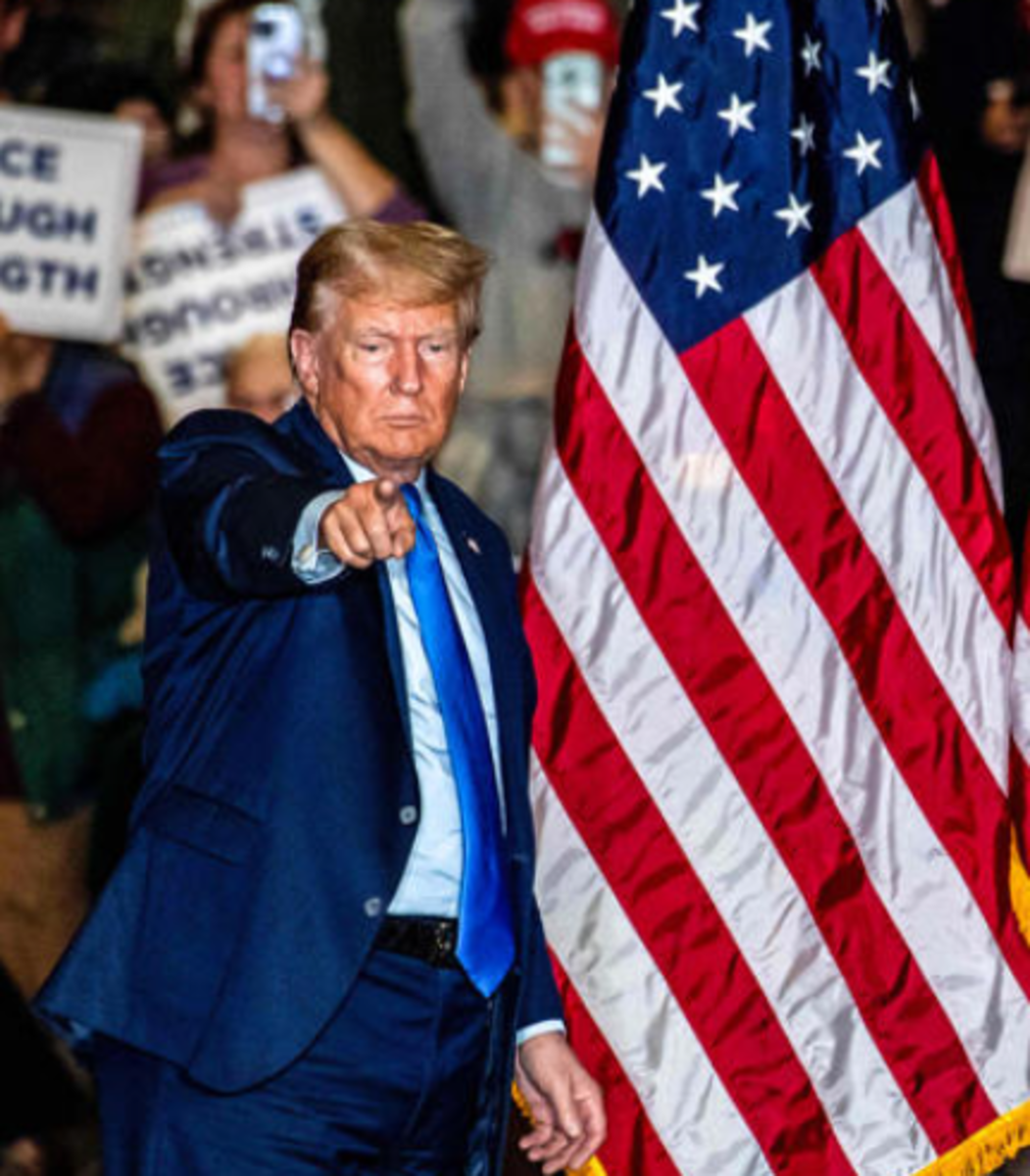The Electoral College and Voting
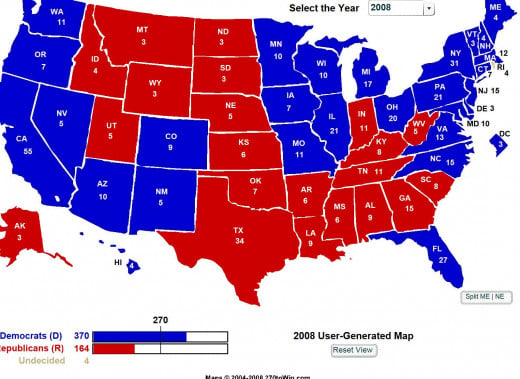
By Joan Whetzel
Every time an election occurs, questions about the Electoral College start swirling around-
- What is the Electoral College?
- Why was it created?
- Do we still need the electoral college?
As with any good debate question, that one has a lot of pros and cons and a lot of people backing both sides of the argument.
What Is the Electoral College?
The Electoral College was an process established by America's founding fathers and written into the Constitution in Article II, Section 1, Clause 2. was a negotiated compromise between those who wanted the President to be elected by members of Congress and those who wanted the President elected by popular vote of qualified citizens (those citizens who were legally allowed to vote according to rules set up in the constitution and its amendments). It is designed as an indirect election based on popular vote rather than direct election entirely by popular vote, as is the case with local and state-wide elections and with elections of Congress.
The Electoral College is made up of a set of electors that have appointed by each state. These electors officially elect the US President and Vice President. The Constitution states how many electors each state is allowed to have (no electors are chosen for US territories or protectorates) and how the electors are should be chosen. Each state is free to choose its own methods for selecting its electors. The number of electors for each state is equivalent to the number of Representatives (based on population) and Senators (2 for each state) that state has in Congress. The 23rd Amendment to the US Constitution refined the Electoral College Process by allowing the District of Columbia 3 electors for the Electoral College. Currently there are 538 electors in the Electoral College. A majority of 270 electoral votes is needed in order for the President to be chosen.
The Electoral College Process begins with the popular vote but continues with:
· the selection of the electors at the state level.
· the gathering of the electors where they place their vote for President and Vice President, based on the popular vote of their state.
· the counting of Electoral College votes by the Congress of the US.
Why Was the Electoral College Created?
Article II, Section 1, Clause 2 of the Constitution reads as follows:
Each State shall appoint, in such Manner as the Legislature thereof may direct, a Number of Electors, equal to the whole Number of Senators and Representatives to which the State may be entitled in the Congress: but no Senator or Representative, or Person holding an Office of Trust or Profit under the United States, shall be appointed an Elector.
Originally, the Electoral College was based on a few of the founding fathers' assumptions about how the election process would work.
· They assumed that each state would set up a "district system" for choosing electors.
· They assumed that each elector would use their own judgment when voting for the President and Vice President.
· They assumed that the President and Vice President would always run independently, not on the same ticket.
· They assumed that the Electoral College process would rarely, if ever, produce a winner, which would allow the vote to go to Congress, who would choose both the President and Vice President.
How Does It Work?
Each Presidential candidate has his own group of electors in each state (which includes D.C., but not US territories or protectorates) who are chosen by the candidate's running party. So, in the case of the 2012 elections, President Obama (D) and Mitt Romney (R) both have electors chosen by their parties in each state. Individual state laws dictate how the electors are selected and their responsibilities.
The Presidential election, every 4 years, is held on the Tuesday after the first Monday in November. Voter's actually choose the electors, because when they vote for President, they are in reality voting for the electors for their chosen candidate. In most states, once all the popular votes are counted, the candidate with the most popular votes takes all the Electoral College votes. It's called the "winner takes all" system. Maine and Nebraska have a "proportional representation" system, that mirrors the popular vote. The electors convene in their respective states, casting their votes for President and Vice President, on individual ballots (each elector gets his or her own vote), which are then recorded on a "Certificate of Vote." These are sent to the Congress and the National Archives.
Once the popular votes are counted, and the electoral college votes decided at the state level, each state's governor prepares a "Certificate of Ascertainment" which lists the names of the Presidential candidates and the names of their respective electors for that state. He Certificate of Ascertainment also announces the winning candidate for the state and the electors that will be representing that state at the Meeting of the Electors on the first Monday after the second Wednesday in December following the election. These Certificates of Ascertainment are sent to the Congress and the National Archives to become part of the national official records.
The electoral votes for each state are counted in a joint session of Congress on January 6th following the December meeting of the electors. The current Vice President (who is the President of the Senate) officiates the counting process and announces the voting results. In cases of a tie in the Senate, the Vice President would be the deciding vote. The President elect takes the Oath of Office and is sworn in as President on January 20th after the election has been finalized.
Current Electoral Vote Distribution Table
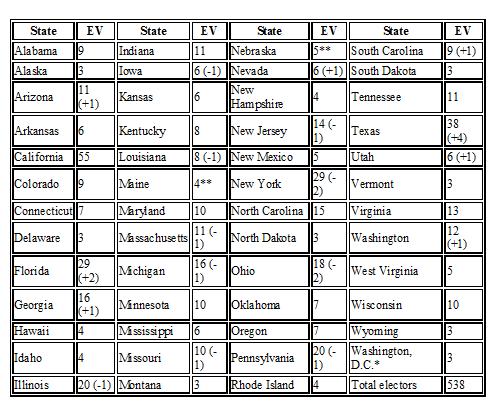
Should We Keep It or Lose It?
This question has been debated for decades. The main argument for those who want to keep the Electoral College is that hallmark of federalism in the US and safeguards the rights of smaller states. Opponents, however, feel that the Electoral College process is undemocratic and that it provides a disproportionate influence by the swing states (those states that do not have a majority republican or democrat voters).
The arguments for getting rid of the Electoral college include:
1. It makes the national popular vote irrelevant, as witnessed by the 1876, 1888, 2000 elections, where the popular vote would have produced one winner, whereas the "winner takes all" electoral college process produced another winner.
2. Pre-election campaigning concentrates on the large swing states in the weeks just prior to the November election, virtually ignoring all other states.
3. It discourages voter turnout because many voters feel the election has already been decided by the Electoral College process.
4. It allows states to disenfranchise specific groups of citizens (anyone with a felony conviction, anyone without a photo ID) without being penalized. This reduces the pool of voters, which may be enough to sway the votes in favor of one candidate.
5. It favors the states with higher populations (Texas, California, New York) who have a larger voter base, which means more electors and greater sway in the decision for who becomes the next President and Vice President.
6. It puts smaller political parties at a disadvantage.
7. It doesn't provide a clear-cut process for electing the President and Vice President, but makes it overly complicated, providing the opportunity to overturn (or veto) the will of the people at multiple states along the way.
The arguments for keeping the Electoral College include:
1. It avoids an "urban-centric" win, meaning the candidates must make their political appeal to all citizens, not just in the major cities.
2. It preserves the "federal character" of the US as a nation, keeping major decisions at the federal level, while still allowing the states the freedom for choices that effect the state as a whole.
3. The "winner takes all" method, rather than discouraging voter turnout, encourages minorities (and all potentially disenfranchised voters) to band together in large blocks to vote for one candidate.
4. Third parties, are seen as having a negative effect on the voting process and elections in general, whereas the Electoral College promotes a 2 party system which evens out the voting process, especially during periods of rapid political and cultural change.
5. It provides the electors with the ability to vote for a viable replacement candidate should the Presidential candidate (by popular vote) should die or become physically unable to take on the position of President. In other words, another popular election would not have to be held in order to elect another presidential candidate.
6. It is supposed isolate the impact of election fraud on a state-by-state basis, so that election problems in one state don't negate the vote as a whole.
7. It allows states to conduct elections with voting methods of their own choosing which don't interfere with and are not influenced by the voting methods of the other states..
8. Some state-wide elections may have weather conditions or may have hotly contested candidates or issues on the ballot which may influence voter turnout. The Electoral College negates the impact of such increases or decreases in voter turnout.
Check out these sites for more information on the Electoral College:
· US Electoral College Calculator available at the US Electoral College website: http://www.archives.gov/federal-register/electoral-college/calculator.html
· US Voting and Election Resources available at the US Electoral College website: http://www.archives.gov/federal-register/electoral-college/links.html
· 2012 Presidential Election Interactive Map on the 270 to Win Website: http://www.270towin.com/
Resources
Wikipedia. Electoral College.
http://en.wikipedia.org/wiki/U.S._Electoral_College#Original_plan
US Government Archives. What Is the Electoral College?
http://www.archives.gov/federal-register/electoral-college/about.html
Kimberling, William C. Federal Election Commission. The Electoral College.
http://www.fec.gov/pdf/eleccoll.pdf


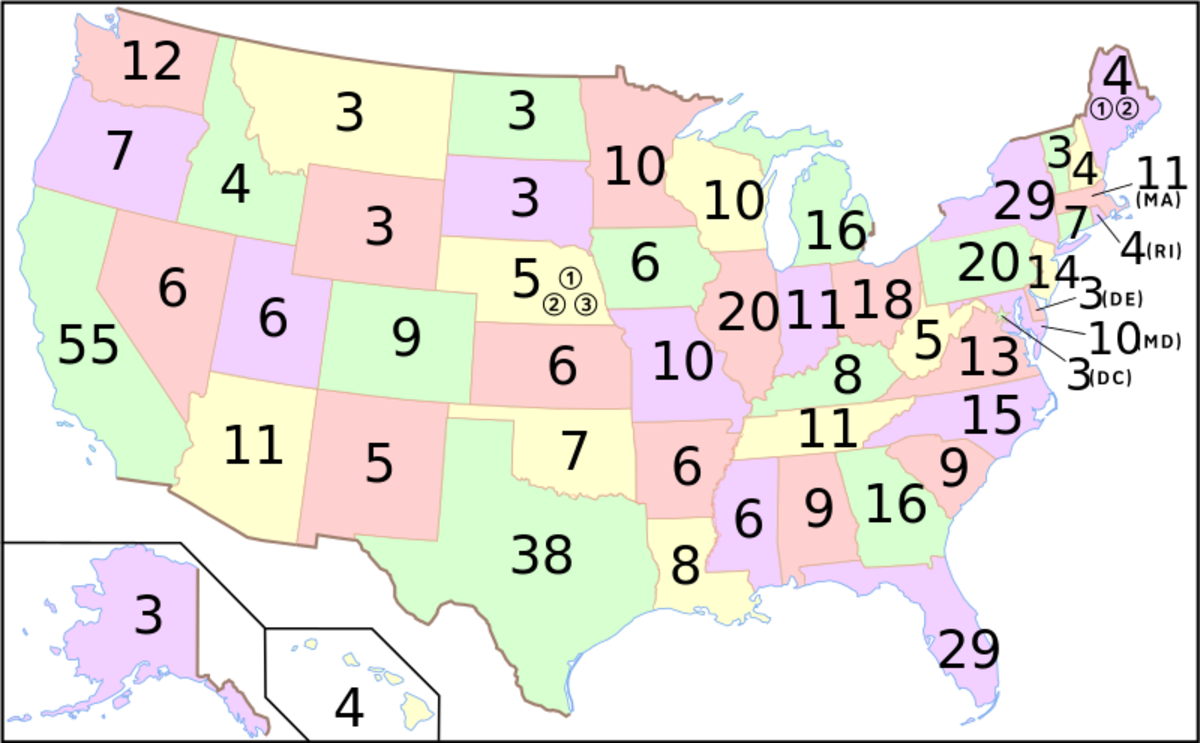
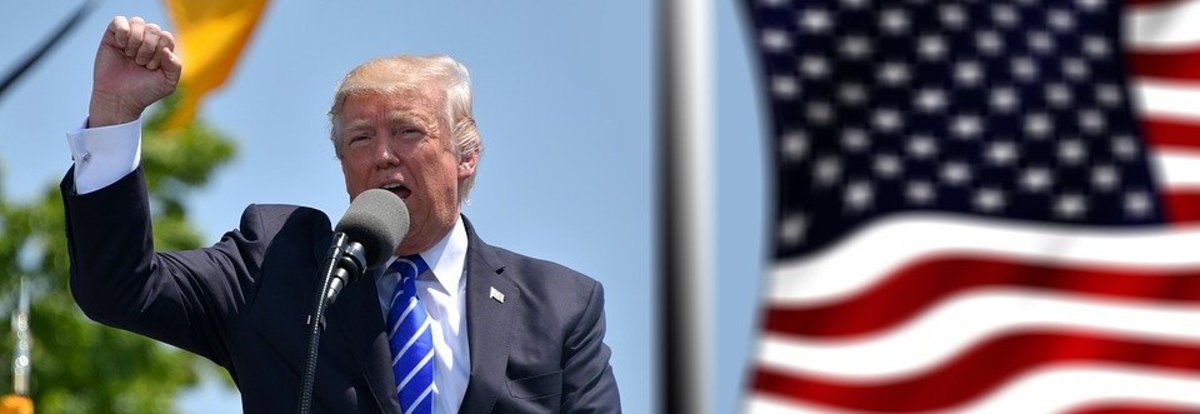
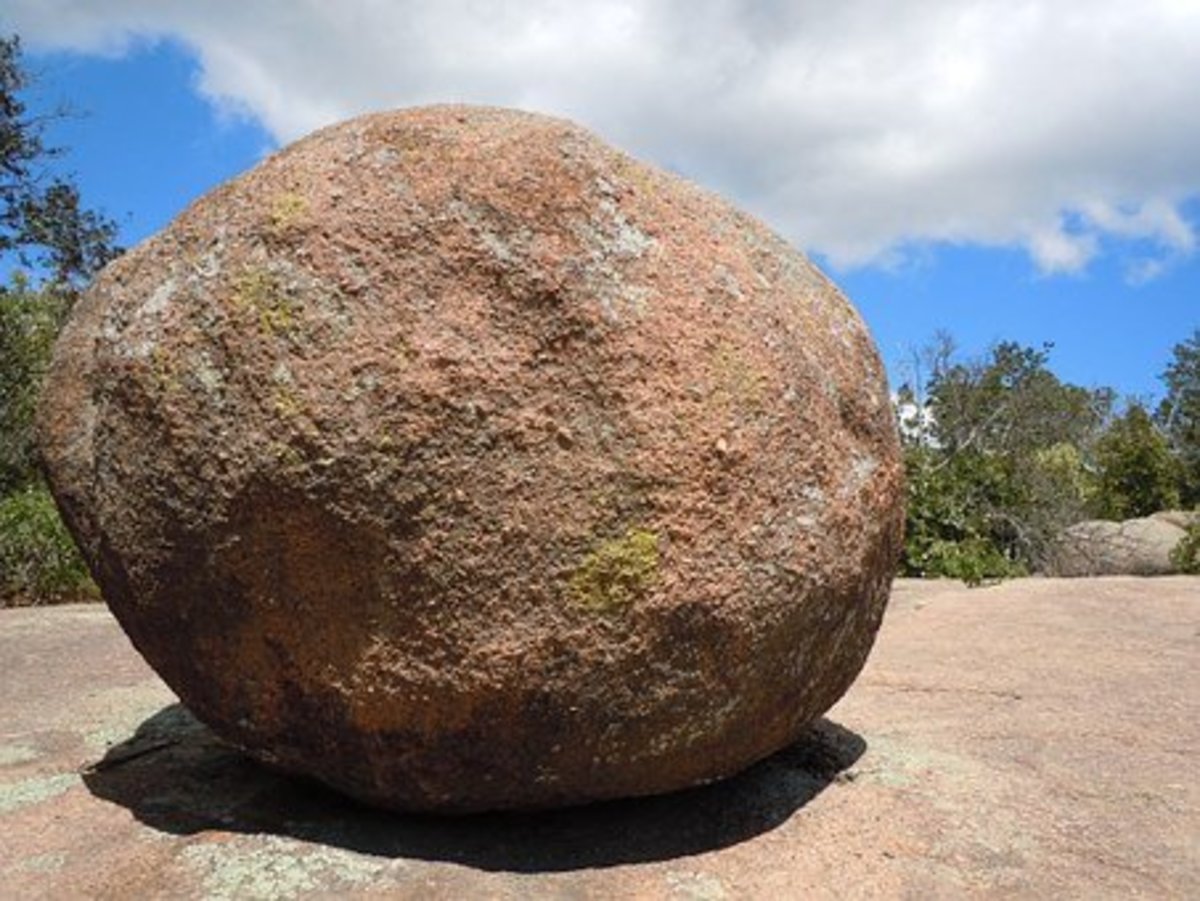

![Election 2014: A Message to The Voters [249*9]](https://usercontent2.hubstatic.com/9226753_f120.jpg)
